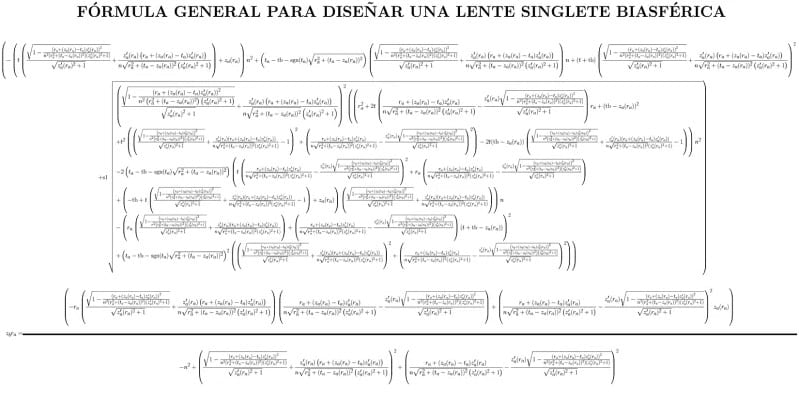The US Military still uses 8 inch floppy disks on outdated IBM computers to run the nuclear missile systems. It’s because they are incredibly hard to hack. The computers are essentially air-gapped and the old IBM computers are reliable. They could run for another 40 years with spare parts.
In 1936 August Dvorak invented…
In 1936 August Dvorak invented a ‘perfect keyboard’ which is way more efficient than regular keyboards as it requires less finger motion and reduces errors compared to the standard QWERTY keyboard arrangement.
This Is How to Stop Alexa from Recording Your Private Conversations
Our eventual robot overlords have now been officially invited inside a good number of American homes. Kind of creepy, right?
I mean, if these things are like vampires, we’ve definitely made the wrong move.
If you are one of the households with a listening robot (or more than one – guilty), you might be wondering if there’s a way to maintain your privacy now that they’re in your house (and linked to your Amazon account).
Answer? Maybe.
If you’re worried about Alexa listening in and using your information (or accidentally sending it to someone else, which has happened to a few unfortunate souls), you can tweak some of your Echo or Echo Dot settings to make it less likely.
First, you want to make sure you don’t give Alexa access to your contacts when you set up your device. If you’ve already enabled that feature, you’ll need to call customer service (877-375-9365) to have them remove it. It does mean that you won’t be able to use Alexa to make calls or send texts, but it also ensures that nothing she (it) overhears could be sent to people you know.
You can also change the “wake word” from Alexa. You only have a few other choices (computer, Amazon, or Echo), but if one of those is less likely to be confused with another word you use commonly in your household, they might be way to go. Ideally, if you use a word she’s less likely to hear (or be tricked into hearing), she won’t “wake up” and start listening on accident.
You can easily change this setting by simply talking to your device or using the Alexa app on your phone or iPad.
If you know you’re having a sensitive conversation that you definitely wouldn’t want anyone – the big box store included – overhearing, the best bet is to manually turn off the microphone by simply pushing the button on your device.
Lastly? Make doubly sure the volume is up high enough that you can hear her asking if it’s okay to send an email or text because you probably don’t want her to mistake silence for a yes.
That’s just not how consent works, Alexa.
The post This Is How to Stop Alexa from Recording Your Private Conversations appeared first on UberFacts.
Women in Africa Are Recycling Plastic into Bricks for a Schoolhouse
Tthe world produces over 300 million tons of plastic every year, much of which quickly goes into the trash where it takes centuries to decompose. In Abidjan, Ivory Coast, women are putting plastic garbage to good use by turning it into bricks to build schools, New York Times reports.
Many women in Abidjan make a living by gathering plastic waste from city streets and selling it to recycling centers. Those same women are now working with a Colombian company to convert the waste into bricks to build schools.
The project will result in hundreds of classrooms to serve about 26,400 students — plus, it’s an opportunity for the women to make a better living.
For the @nytimes, @EverydayAfrica's @YagazieEmezi photographed the women in West Africa who collect and recycle plastic garbage, which, when it's turned into bricks, can be used to build schools. https://t.co/y505rih5ik
— Everyday Projects (@evdayprojects) July 30, 2019
Many schools in the area are built out of traditional mud-bricks and wood. These buildings require a lot of upkeep, as they easily erode in the sun and rain.
The buildings made out of recycled plastic, on the other hand, will last practically forever. In this context, plastic’s slow decomposition is a benefit.
Also, the country’s classrooms are severely overcrowded, with up to 90 students in each class. Additional classrooms are desperately needed.
Since Abidjan produces about 300 tons of plastic waste a day, there’s plenty of plastic to use. Each classroom takes about five tons of plastic waste.
UNICEF breaks ground on Africa’s first-of-its-kind recycled plastic brick factory in Côte d'Ivoire
#school #Recycle @TerraCycle #education https://t.co/6KuHrWayvd
— Juliette Touma (@JulietteTouma) August 3, 2019
The company converting the waste, Conceptos Plásticos, initially produced the bricks at a factory in Colombia, but they are now building a factory in Abidjan, which will make the classrooms much cheaper to produce.
Several classrooms are already up and running, and the project plans to deliver 528 total, each of which will fit 50 students.
The post Women in Africa Are Recycling Plastic into Bricks for a Schoolhouse appeared first on UberFacts.
Velcro Wants People to Stop Using the Term “Velcro” so They Dropped a Music Video
Velcro was invented in the early 1940s, but after losing its patent in the 1970s, the market was flooded with other “hook and loop” fasteners that, while not Velcro brand, were quickly labeled as such by the public.
Basically, anything that sticks together without adhesive is Velcro, right? Maybe, but once a term becomes “genericized” in that manner, the original company loses its trademark. Legal resource UpCounsel refers to this process as Genericide, because the original company – Velcro, in this instance – would lose not only their trademark, but their ability to stop other companies from using trademarked branding on non-Velcro products. And, thus, they’ll probably lose a whole lot of sales.
In a last-ditch and hilariously original attempt to hold onto their trademark, Velcro has released a music video pretty much begging the public to help them out by saying “hook and loop” instead of their company name.
While the word f*ck isn’t bleeped in the video, the other brand names are, and the people at Velcro are quick to say that they’re not only doing this for themselves, but for every former brand name that fell victim to being so ubiquitous and popular that it eventually spelled their financial death.
“I know that bleeped stuff is more fun to say, but if you keep saying it, our trademark goes away.”
The video is entertaining, catchy, and quite smart – so please, enjoy.
And you know, maybe we could give them a break? Because if nothing else, this whole thing is sort of depressing in its desperation, is it not?
Is it too late? Are people ever going to abandon the word “velcro” for “hook and loop?”
If the people at Velcro have anything to say about it…still probably no, but at least they can say they didn’t go down without a (musical) fight.
The post Velcro Wants People to Stop Using the Term “Velcro” so They Dropped a Music Video appeared first on UberFacts.
10 Facts That Are Good for Quiet Reflection
With this fact set, you’re getting quality and quantity.
Enjoy! And learn!
1. Harmful

Photo Credit: did you know?
2. Get a load of those names

Photo Credit: did you know?
3. Are you living it?

Photo Credit: did you know?
4. Prudish

Photo Credit: did you know?
5. Thank God!

Photo Credit: did you know?
6. Dream away

Photo Credit: did you know?
7. I think I sound like Barry White

Photo Credit: did you know?
8. That is cool!

Photo Credit: did you know?
9. Clone wars

Photo Credit: did you know?
10. Ahhhhh, that’s better

Photo Credit: did you know?
I can safely say I didn’t know any of those facts. How about you?!?!
The post 10 Facts That Are Good for Quiet Reflection appeared first on UberFacts.
This Non-Profit Recycles the Soap from Hotels You Leave Behind When You Check out
Every time you check out of a hotel, you leave behind a mostly-unused bar of soap. It may even be untouched, if you’re the type of person who has strong soap preferences. So what happens to it?
The answer is pretty disappointing: hotels generally just throw the soap away for sanitary reasons. And all that soap adds up; about one million bars of soap are thrown out every day in the U.S., between travelers and hotels.
One traveler was unhappy to discover this wasteful practice, so he decided to do something about it. Shawn Seipler, a former tech employee who used to travel five months out of the year, thought that he could make better use of all those slivers of soap, so he started Clean The World. The Orlando-based company collects unwanted hotel soap, sanitizes it, melts it down, and redistributes it around the world.
Just last year, Clean The World made over 7 million bars of recycled soap, which were then donated to people in need. Thousands of children die from diseases that are preventable with basic hygiene — or, as Clean The World puts it, “Soap saves lives.” The organization also recycles shampoo, conditioner and body wash for homeless shelters around the world.
Clean The World partners with hotels for the modest price of 50 cents per room per month. There are operating centers in Orlando, Las Vegas, Montreal, India and Hong Kong.
“There’s a whole world of hotels out there we can get to start donating,” Shawn told Thrillist. “Right now we’ve got 20 percent of all hotels in the US. That’s a lot of room to grow, and a lot of soap to make.”
The post This Non-Profit Recycles the Soap from Hotels You Leave Behind When You Check out appeared first on UberFacts.
5 of the Most Costly Computer Failures in History
It’s utterly terrifying to think of what would happen if there was a major computer-related disaster and the entire world’s records were wiped out in one second.
I guess we never really know what dangers lurk out there in the world of cybercrime, hacking, etc., but it’s scary to think about it, considering how much we rely on computers for everything.
Let’s look at five major computer failures in history and what ended up happening.
1. The Dhahran Patriot Missile Interception

Photo Credit: US Army
During the first Gulf War in the early 1990s, the Patriot Missile became an iconic fixture. The Patriots were able to shoot down other missiles and aircraft.
One Patriot system in Saudi Arabia had its internal clock drift by 0.34 seconds because it had been operational for 100 hours. Israelis had advised the Americans to periodically reboot the system’s computers, but it was not done. The results turned out to be fatal.
On February 25, 1991, Iraqi forces launched a Scud missile. The Patriot system originally detected it but because of the slight time drift, it looked in the wrong place and did not attempt to intercept the Scud. The missile hit American barracks in Saudi Arabia and 28 American soldiers were killed.
2. WannaCry

Photo Credit: Public Domain
A worldwide ransomware cyberattack was launched in May 2017 affecting Windows-based computers. The encrypted data put out by the virus infected over 200,000 computers in 15 countries.
The WannaCry attack demanded ransom from those affected, asking for between $300 and $600 per computer. If people paid the ransom, their data was returned safely. WannaCry also badly infected the UK’s National Health System. It’s estimated that the attack caused $4 billion worldwide, and it is believed that North Korea was to blame.
3. Spectre

Photo Credit: Wikipedia
Spectre, discovered in 2018, is a vulnerability present in almost all current computer systems. This is how it works: it tricks a program into accessing memory while actually allowing someone to read data and possibly retrieve sensitive information.
It’s highly likely that Spectre will not disappear for a long time, and it might even be affecting your system right now.
4. ILOVEYOU

Photo Credit: Wikipedia
On May 5, 2000, millions of people around the world received an email with “ILOVEYOU” in the subject line. There was a file attached to each email called “LOVE-LETTER-FOR-YOU.TXT.vbs,” and, in classic fashion, millions of people opened the file.
When opened, the virus overwrote files on the computer and sent copies of itself to every address in a person’s Microsoft Outlook contacts, so you can imagine how quickly it spread. The attack ended up costing $15 billion to remove from computer systems after it infected 50 million computers in just ten days.
5. The Boeing 737 MAX

Photo Credit: Wikipedia
This one you may have heard of, since it’s been in the news recently.
The Boeing 737 MAX was rushed into production, and, like all planes, it needed to keep its fuel costs as low as possible. But the 737 MAX needed larger engines that could not be mounted on the wings like usual, which meant the engines were moved closer to the body.
Because it would be expensive to retrain pilots to deal with the changes, Boeing used a computerized system called MCAS that automatically pushed the nose of the aircraft down when an excessive angle was detected. They also neglected to inform pilots about the MCAS system.
This technology led to two catastrophic incidents: a Lion Air flight crashed in October 2018 and an Ethiopian Airlines flight crashed in March 2019 that killed a total of 346 people. The 737-MAX is now grounded worldwide, costing airlines and Boeing millions, if not billions of dollars.
The post 5 of the Most Costly Computer Failures in History appeared first on UberFacts.
This Is How You Can Tell If Someone Blocked You on Facebook
Most of us don’t have the time or interest to go checking (or caring) who might have decided they no longer want to see what we have to say on Facebook.
That said, most of us also have moments of morbid curiosity that we’ll occasionally give into. And maybe we want to know if that one interaction (or something more personal) caused a “friend” (or relative, natch) to not only unfriend us on Facebook, but to completely block us from their timeline.
Here are some tips and tricks for those inevitable moments!
Scroll Through Your Friend List
If one of your former “friends” has blocked or unfriended you, they’ll no longer been on the list.
Do A General Search
If you type a name into the search bar and, when you click on a name, it shows that you’re friends, then the two of you are still in good standing.
If it shows the option to “Add Friend,” then you’ve been Unfriended. You can tell if you’ve been fully blocked by clicking on their name and seeing whether or not you’re able to see their public posts.
If you can’t, things are as bad as you think.
You’ve Definitely Been Blocked When…
Someone you know has an active profile doesn’t show up in the search results at all.
Your options are getting a friend to do the stalking for you or – crazy – talk to them about what happened in person, if that’s the sort of relationship you used to have.
There you go – but like I said, try not to get too wrapped up in what people think of you online.
There there be monsters, my friends.
The post This Is How You Can Tell If Someone Blocked You on Facebook appeared first on UberFacts.
A Mexican Physicist Solved a 2,000-Year-Old Lens Problem with One Wild Equation
Even Isaac Newton couldn’t crack this case — but Rafael G. González-Acuña did.
A physicist in Mexico just solved a problem that has plagued scientists for over 2,000 years.
For centuries, lenses have faced a problem: the corners and edges are always a little soft and out of focus. It’s called “spherical aberration,” and it’s caused by differences in light refraction across the lens, along with imperfections in its shape and materials.
Photo Credit: iStock
Spherical aberration was presumed to be an unsolvable issue. Lens designers have developed workarounds to counteract and correct the effect, resulting in a uniformly clear image. However, these adaptive techniques can get incredibly pricey — which is part of why high-quality photography gear costs so much money.
Enter Rafael.
Rafael is a doctoral student at Mexico’s Tecnológico de Monterrey. After months of work, he came up with an equation to design a lens that eliminates spherical aberration completely. This equation works for a lens of any size, material or purpose.
Photo Credit: Tecnológico de Monterrey
This development is not only exciting on a scientific level, but it will also provide practical benefits to many different types of people. Cameras of all kinds, including smartphone cameras, will be easier and cheaper to design. Photographers will no longer have to deal with focus issues with their high-end equipment. Sharper lenses will also be able to be used for other optical devices, like telescopes and microscopes.
All in all, Rafael’s breakthrough is evidence that no problem is too old to solve.
The post A Mexican Physicist Solved a 2,000-Year-Old Lens Problem with One Wild Equation appeared first on UberFacts.
 . .我が家の不安定なWiFiだから? .接続なってるのに未接続になったりして多少手こずった
. .我が家の不安定なWiFiだから? .接続なってるのに未接続になったりして多少手こずった . .でもそのあとはひと通り遊んだー
. .でもそのあとはひと通り遊んだー . .子供達はピカチュウとひょっこりはんがお気に入り
. .子供達はピカチュウとひょっこりはんがお気に入り .赤鬼のピンポーンで末っ子ギャー
.赤鬼のピンポーンで末っ子ギャー って逃げてった
って逃げてった
 .色んなスキルがあるようでまだまだ遊べそう
.色んなスキルがあるようでまだまだ遊べそう . #Amazonecho #Alexa #当選品 #mama_dog05当選記録
. #Amazonecho #Alexa #当選品 #mama_dog05当選記録 ・ こうして人は 私は どんどんグータラになってゆく。。 ・ ・ #アレクサ #alexa #amazonecho
・ こうして人は 私は どんどんグータラになってゆく。。 ・ ・ #アレクサ #alexa #amazonecho My Generation by Schein Orthotic Shoes – KATE, Silver (floral embossing) . . . . #orthotics #tandsorthotics #schein #scheinfootwear #shoes #velcro #nubuck #velcroshoes #orthoticshoes #orthoticfootwear #childrensfootwear #kidsfootwear #childrensorthotics #silver #floral
My Generation by Schein Orthotic Shoes – KATE, Silver (floral embossing) . . . . #orthotics #tandsorthotics #schein #scheinfootwear #shoes #velcro #nubuck #velcroshoes #orthoticshoes #orthoticfootwear #childrensfootwear #kidsfootwear #childrensorthotics #silver #floral : @clean_the_world_asia
: @clean_the_world_asia Estamos inundados de información día tras día, esto nos hace complicado hacer llegar nuestras oferta de productos y servicios a nuestro publico objetivo
Estamos inundados de información día tras día, esto nos hace complicado hacer llegar nuestras oferta de productos y servicios a nuestro publico objetivo  Existen distintos tipos de redes sociales
Existen distintos tipos de redes sociales  Horizontales albergan todo tipo de usuarios sin una temática claramente definida. Facebook o WhatsApp son ejemplos de las redes sociales más importantes de esta categoría.
Horizontales albergan todo tipo de usuarios sin una temática claramente definida. Facebook o WhatsApp son ejemplos de las redes sociales más importantes de esta categoría.  Verticales se especializan en algún campo, actividad o temática. Pueden ser profesionales o referidas a algún tema en concreto como puede ser moda o música. Ejemplos de esta categoría son Pinterest, SoundCloud o LinkedIn Ya sabes que Red Social usar para llegar a tu publico objetivo? Foto: @mauriciostradaphotography #avanza2creativos #agenciadigital #marketingdigital #marketingtips #marketingonline #branding #socialmedia #redessociales #rrss #felizlunes #instagram #facebook #twitter #linkedin #venezolanosenmadrid #venezolanosenespaña #emprendedores #emprendimientovenezolano
Verticales se especializan en algún campo, actividad o temática. Pueden ser profesionales o referidas a algún tema en concreto como puede ser moda o música. Ejemplos de esta categoría son Pinterest, SoundCloud o LinkedIn Ya sabes que Red Social usar para llegar a tu publico objetivo? Foto: @mauriciostradaphotography #avanza2creativos #agenciadigital #marketingdigital #marketingtips #marketingonline #branding #socialmedia #redessociales #rrss #felizlunes #instagram #facebook #twitter #linkedin #venezolanosenmadrid #venezolanosenespaña #emprendedores #emprendimientovenezolano

 Don’t worry, we open at 11 and have plenty of #alcohol to numb the pain. • • • • • #onmyblockedit #blockedonfacebook #blockedoninstagram #blockedontwitter #blockedonsnapchat #fakefriends #fakefriendsquotes #fakefriendsbelike #fuckfakefriends #fakefriendssuck #fakefriendship #nofakefriends #fakefriendseverywhere #fakeassfriends #northeastphilly #northeastphiladelphia
Don’t worry, we open at 11 and have plenty of #alcohol to numb the pain. • • • • • #onmyblockedit #blockedonfacebook #blockedoninstagram #blockedontwitter #blockedonsnapchat #fakefriends #fakefriendsquotes #fakefriendsbelike #fuckfakefriends #fakefriendssuck #fakefriendship #nofakefriends #fakefriendseverywhere #fakeassfriends #northeastphilly #northeastphiladelphia
